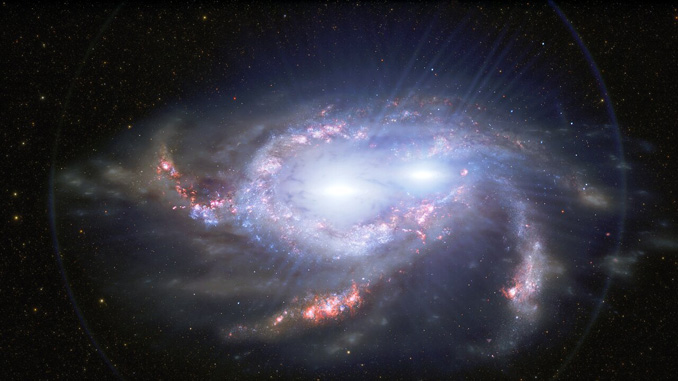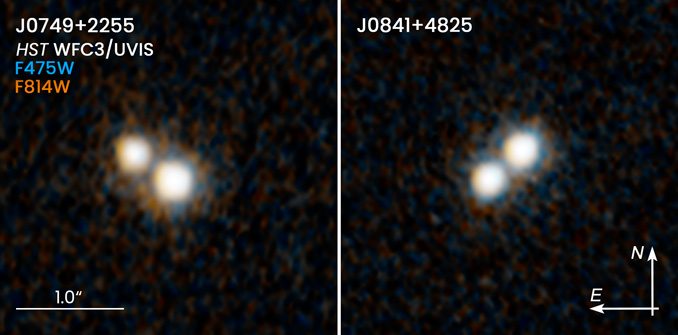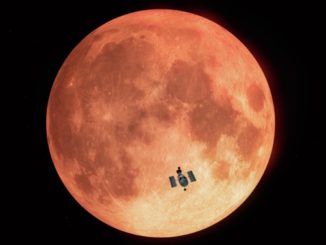
Astronomers have spotted two close pairs of quasars in the process of merging as their host galaxies crash together in a slow-motion collision 10 billion years ago. The quasars in both pairs are separated by about 10,000 light years, closer than any two quasars yet found at such an early point in the evolution of the universe.
“We estimate that in the distant universe, for every one thousand quasars, there is one double quasar,” said Yue Shen, an astronomer at the University of Illinois and lead author of the paper in Nature Astronomy. “So finding these double quasars is like finding a needle in a haystack.”
Quasars are brilliant galaxies powered by supermassive black holes actively pulling in surrounding gas and dust, generating enormous energy as the in-falling material is heated to extreme temperatures. Quasars have dramatic effects on galaxy formation and evolution and dual quasars in merging galaxies offer insights into that process.
“This truly is the first sample of dual quasars at the peak epoch of galaxy formation with which we can use to probe ideas about how supermassive black holes come together to eventually form a binary,” said research team member Nadia Zakamska of Johns Hopkins University.

Shen and Zakamska are using the Hubble Space Telescope, data from the European Space Agency’s Gaia space observatory, the Sloan Digital Sky Survey, the Gemini North telescope and other ground-based observatories to put together a census of quasar pairs early in cosmic history.
The researchers say quasar pairs provide insights into how gravitational interactions distort colliding galaxies and trigger quasar ignition. Over time, powerful galactic winds can sweep out much of the gas in the merging systems, ending star formation as the two systems combine to form a single elliptical galaxy.
“Quasars make a profound impact on galaxy formation in the universe,” Zakamska said. “Finding dual quasars at this early epoch is important because we can now test our long-standing ideas of how black holes and their host galaxies evolve together.”
More than 100 double quasars have been discovered to date, but none are as old and close together as these two.



